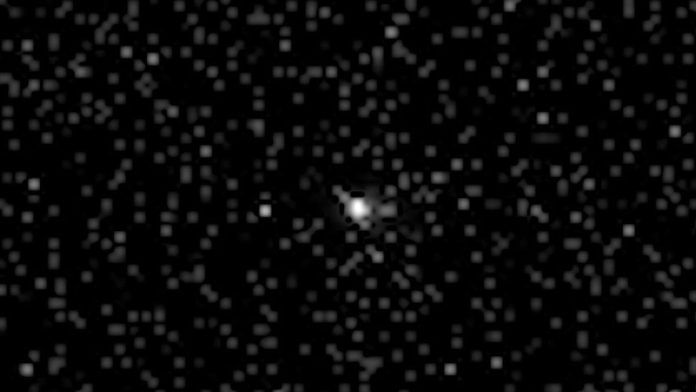New Delhi: It is not often we get an alien from another solar system. Comet 3I/ATLAS is only the third confirmed interstellar object ever detected in our celestial neighbourhood. And this interstellar visitor has gotten both the scientific and the lay astronomy community excited. So, what is this ‘alien’ object in our space and does it possess any threat to earth?
The comet’s name is a story in itself, encoding both its classification and its discovery.
‘3I’ refers to ‘third interstellar’ — the two other known interstellar objects are 1I/ʻOumuamua, which was seen in 2017, and 2I/Borisov, detected in 2019. According to NASA, astronomers have categorised comet 3I/ATLAS as interstellar because of the hyperbolic nature of its orbit. This means it has come from outside our solar system and is not gravitationally bound to our Sun.
It was discovered by NASA’s Asteroid Terrestrial-impact Last Alert System (ATLAS) in Rio Hurtado, Chile, on 1 July. ATLAS is an asteroid detection system consisting of four telescopes that scan the sky and detect near-Earth objects (NEOs), such as asteroids, which are on a collision course with Earth.
Comet 3I/ATLAS though poses no such threat to Earth and will pass by at a safe distance. The closest it will get to Earth is 1.8 astronomical units (about 270 million kms) on 19 December. It was nearest to the Sun on 30 October — 1.4 au away — when it was within the orbit of Mars.
NASA states that the comet is currently very close to the Sun, making it difficult to see the object through amateur telescopes. As per The Virtual Telescope Project 2.0, the comet was spotted in November after its encounter with the Sun using a robotic unit in Manciano, Italy.
How can it be spotted
To locate the comet, skywatchers can use Venus or the bright star Spica as initial guides, supplementing this with stargazing apps like SkySafari or Stellarium.
Comets are inherently unpredictable, especially following their encounter with the Sun, hence November might be the best opportunity to catch a glimpse of 3I/ATLAS.
It was in conjunction with the Sun on October 21, making it appear directly behind the Sun and unobservable at the time. If a celestial body is in conjunction with a planet, both appear to be next to each other in the sky, although they are not positionally nearby.
Conjunctions are important for astronomers and skywatchers because they make it possible to observe multiple celestial objects together through telescopes or with the naked eye. Astronomer Qicheng Zhang, on October 31, recorded the first optical image of 3I/ATLAS as it reemerged, confirming that it can be observed by ground‑based telescopes again.
Why is this important?
Initial theories, including the ones propagated by Harvard astrophysicist Avi Loeb, suggested that 3I/ATLAS might be evidence of an extra-terrestrial probe. Loeb has been writing extensively on the comet on his blog . He has listed eight anomalies that give it a ‘Loeb rank’ of 4 – where 0 refers to a definite natural interstellar object and 10 a definite technological object.
Loeb claims that the strange blue glow “could potentially be explained by a hot engine or a source of artificial light”. Comets typically redden in sunlight; blue is typically linked to gas-emissions.
Non-gravitational acceleration is another key anomaly, according to Loeb. It means the comet is changing its speed and course in ways not fully explained by gravitational forces alone.
Astrophysicist Neil deGrasse Tyson has been more cautious and sceptical. “So you’re telling me that your best evidence for aliens is a fuzzy monochromatic Tic Tac on a screen from a Navy pilot?” he said. “That’s your best evidence in our own atmosphere?
The comet’s uncharacteristic traits like unusual brightness, alien chemical nature, distinct trajectory, and aforementioned anomalies spark scientific curiosity and the popular imagination.
Are the building blocks of planets and thus life different elsewhere? This speculation is driving the excitement surrounding Earth’s latest interstellar guest.
(Edited by Aamaan Alam Khan)






